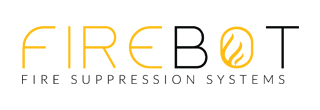
Stop Fires Before They Do Damage: Tech to Detect and Extinguish A Fire
SELF-ACTIVATING FIRE SUPPRESSION SYSTEM. A low-cost device that detects and suppresses stovetop fires automatically.
AWARDS GBCI CREDIT. NO AIA CREDIT. This course explores the intersection of safety and sustainability in modern fire suppression systems, with a focus on kitchen environments—the leading setting for residential fires. Participants will identify the most common causes of kitchen fires and assess how cutting-edge suppression technologies are mitigating these risks. Emphasis will be placed on the role of non-toxic, biodegradable fire suppressants that offer low maintenance, straightforward installation, and regulatory compliance, ensuring occupant safety without compromising environmental standards. Design professionals will evaluate advancements such as thermal detection systems, clean-agent suppressants, and smart home integration that are transforming how fires are detected and controlled in residential kitchens. Through analysis of real-world case studies and emerging innovations, this course will provide a forward-looking perspective on how sustainable fire suppression strategies enhance occupant protection, reduce environmental impact, and align with evolving safety codes and green building practices.
- Identify the most common causes of kitchen fires and analyze the effectiveness of modern fire suppression systems in mitigating these risks and protecting occupants.
- Discuss how non-toxic biodegradable fire suppressants offer low maintenance, easy installation, and compliance with industry regulations to protect occupants.
- Evaluate the latest advancements in fire suppression technology, including thermal sensors, suppression agents, and smart home integration.
- Analyze real-world applications and future innovations in fire suppression, considering their impact on occupant safety and property protection in various residential kitchen settings.





